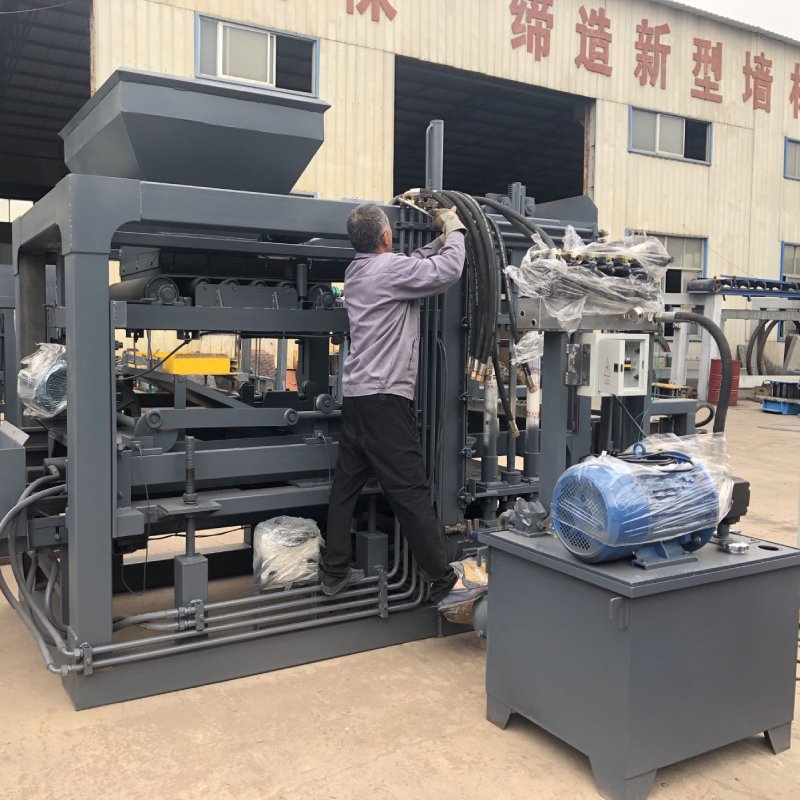
Image source :Aiweiblockmachine
Utilizing Augmented Reality (AR) for Training and Maintenance in Block Production
Title: Enhancing Efficiency: Utilizing Augmented Reality (AR) for Training and Maintenance in Block Production
Introduction
The world of manufacturing and production is constantly evolving, with technological advancements playing a pivotal role in enhancing efficiency and productivity. One such technological marvel making waves in the industrial landscape is Augmented Reality (AR). While AR is often associated with gaming and entertainment, its application in industries like block production is transforming traditional training and maintenance processes. In this article, we will explore the various ways in which AR is being harnessed to streamline training programs and optimize maintenance tasks in the block production sector.
Training Revolutionized Through Augmented Reality
Training new employees in the intricacies of block production has traditionally involved a combination of classroom sessions, hands-on experience, and manuals. However, AR has introduced a revolutionary shift in this paradigm, offering immersive and interactive training experiences. Here’s how AR is making a difference in the training landscape of block production:
- Interactive Learning Modules: AR enables the creation of interactive 3D learning modules, allowing trainees to visualize and understand the entire block production process. This hands-on approach enhances comprehension and retention compared to traditional methods.
- Simulated Environments: Through AR applications, trainees can immerse themselves in simulated block production environments. This allows them to familiarize themselves with machinery, safety protocols, and emergency procedures in a risk-free virtual setting.
- Real-time Guidance: AR glasses equipped with sensors can provide real-time guidance to trainees on the production floor. This feature is particularly valuable for teaching intricate processes, ensuring that workers receive immediate feedback and correction as they perform tasks.
- Remote Assistance: In situations where experts are not physically present, AR facilitates remote assistance. Technicians or trainers can guide workers through complex procedures by overlaying instructions onto the worker’s field of vision, reducing downtime and increasing efficiency.
Maintenance Optimized Through AR Applications
Maintenance is a critical aspect of any manufacturing process, and the block production industry is no exception. AR is proving to be a game-changer in this regard, offering innovative solutions to streamline maintenance tasks and increase overall operational efficiency:
- Maintenance Guides via AR: AR applications can provide maintenance personnel with step-by-step guides overlaid onto the equipment they are working on. This visual assistance ensures that maintenance tasks are performed accurately, reducing the risk of errors.
- Equipment Diagnostics in Real-time: AR-enabled devices can connect to the production machinery and display real-time diagnostics. Maintenance teams can quickly identify issues, access relevant information, and perform repairs promptly, minimizing downtime.
- Remote Monitoring and Troubleshooting: AR technology allows for remote monitoring of equipment. Maintenance professionals can analyze data, identify potential issues, and even troubleshoot problems from a remote location, reducing the need for on-site visits and speeding up the resolution process.
- Enhanced Training for Maintenance Personnel: AR is not limited to initial training; it also plays a crucial role in ongoing training for maintenance personnel. Regular updates, new procedures, and safety protocols can be delivered through AR applications, ensuring that the maintenance team stays current with the latest information.
Benefits of AR Adoption in Block Production
The integration of AR into training and maintenance processes in block production brings forth a multitude of benefits:
- Reduced Downtime: By providing real-time guidance and diagnostics, AR helps in minimizing downtime associated with equipment breakdowns or human errors. Quick and accurate problem resolution translates to increased operational efficiency.
- Improved Safety Standards: The immersive training experiences offered by AR contribute to a safer working environment. Workers are better equipped to handle machinery, emergency situations, and adhere to safety protocols, reducing the risk of accidents.
- Cost Savings: Streamlined training processes and optimized maintenance result in cost savings for block production facilities. The reduction in downtime, improved efficiency, and decreased likelihood of errors contribute to a more financially sustainable operation.
- Enhanced Skill Development: AR-based training not only facilitates a quicker understanding of tasks but also enhances skill development among workers. The interactive nature of AR modules fosters a deeper understanding of the production process, contributing to a more skilled and adaptable workforce.
- Remote Accessibility and Collaboration: AR’s ability to provide remote assistance and monitoring fosters collaboration among team members, even if they are not physically present on the production floor. This is particularly valuable in scenarios where experts are located at different locations.
Challenges and Future Outlook
While the benefits of integrating AR into block production processes are evident, challenges remain, including initial implementation costs, technological infrastructure requirements, and the need for workforce adaptation. However, as technology continues to advance and becomes more accessible, these challenges are likely to diminish.
The future of AR in block production looks promising, with ongoing research and development aiming to further enhance the technology’s capabilities. Advancements such as improved gesture recognition, increased device compatibility, and more sophisticated AR applications tailored to specific production needs are on the horizon.
Conclusion
The utilization of Augmented Reality in training and maintenance processes within the block production industry represents a significant step towards a more efficient and technologically advanced future. As industries continue to embrace the transformative power of AR, the benefits in terms of reduced downtime, improved safety standards, and enhanced workforce skills are becoming increasingly evident. The integration of AR is not just a technological upgrade; it’s a strategic investment in the long-term success of block production facilities, paving the way for a more sustainable and productive future.
